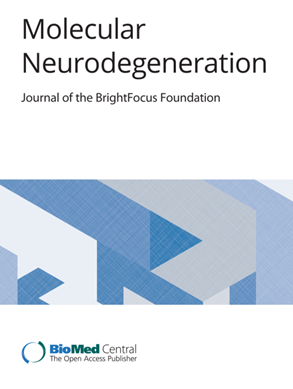ALS和FTD中的rna结合蛋白:从致病机制到治疗见解
IF 17.5
1区 医学
Q1 NEUROSCIENCES
引用次数: 0
摘要
肌萎缩侧索硬化症(ALS)和额颞叶痴呆(FTD)是具有重叠临床、遗传和病理特征的破坏性神经退行性疾病。大量证据强调了rna结合蛋白(rbp) -特别是TAR dna结合蛋白43 (TDP-43)和融合肉瘤(FUS) -在这些疾病的发病机制中的关键作用。这些rbp通常调节神经系统中RNA代谢的各个关键方面(通过组装成短暂的生物分子凝聚物),但在ALS和FTD中发生细胞质错定位和病理聚集。此外,新出现的证据表明,含有rbp的聚集体可能以朊病毒样方式在神经系统中传播,从而推动这些神经退行性疾病的进展。在这篇综述中,我们总结了将RBP功能障碍确立为ALS和FTD中心主题的遗传和神经病理学发现,并讨论了疾病相关RBP在健康和疾病中的作用。此外,我们回顾了有关RBP病理中朊病毒样特性的新证据,并探讨了驱动神经变性的下游机制。通过揭示rbp在ALS和FTD中的复杂作用,我们的最终目标是为这些无法治愈的疾病的治疗干预提供潜在的途径。本文章由计算机程序翻译,如有差异,请以英文原文为准。
RNA-binding proteins in ALS and FTD: from pathogenic mechanisms to therapeutic insights
Amyotrophic lateral sclerosis (ALS) and frontotemporal dementia (FTD) are devastating neurodegenerative disorders with overlapping clinical, genetic and pathological features. A large body of evidence highlights the critical role of RNA-binding proteins (RBPs) – in particular TAR DNA-binding protein 43 (TDP-43) and Fused in sarcoma (FUS) – in the pathogenesis of these diseases. These RBPs normally regulate various key aspects of RNA metabolism in the nervous system (by assembling into transient biomolecular condensates), but undergo cytoplasmic mislocalization and pathological aggregation in ALS and FTD. Furthermore, emerging evidence suggests that RBP-containing aggregates may propagate through the nervous system in a prion-like manner, driving the progression of these neurodegenerative diseases. In this review, we summarize the genetic and neuropathological findings that establish RBP dysfunction as a central theme in ALS and FTD, and discuss the role of disease-associated RBPs in health and disease. Furthermore, we review emerging evidence regarding the prion-like properties of RBP pathology, and explore the downstream mechanisms that drive neurodegeneration. By unraveling the complex role of RBPs in ALS and FTD, we ultimately aim to provide insights into potential avenues for therapeutic intervention in these incurable disorders.
求助全文
通过发布文献求助,成功后即可免费获取论文全文。
去求助
来源期刊

Molecular Neurodegeneration
医学-神经科学
CiteScore
23.00
自引率
4.60%
发文量
78
审稿时长
6-12 weeks
期刊介绍:
Molecular Neurodegeneration, an open-access, peer-reviewed journal, comprehensively covers neurodegeneration research at the molecular and cellular levels.
Neurodegenerative diseases, such as Alzheimer's, Parkinson's, Huntington's, and prion diseases, fall under its purview. These disorders, often linked to advanced aging and characterized by varying degrees of dementia, pose a significant public health concern with the growing aging population. Recent strides in understanding the molecular and cellular mechanisms of these neurodegenerative disorders offer valuable insights into their pathogenesis.
 求助内容:
求助内容: 应助结果提醒方式:
应助结果提醒方式:


